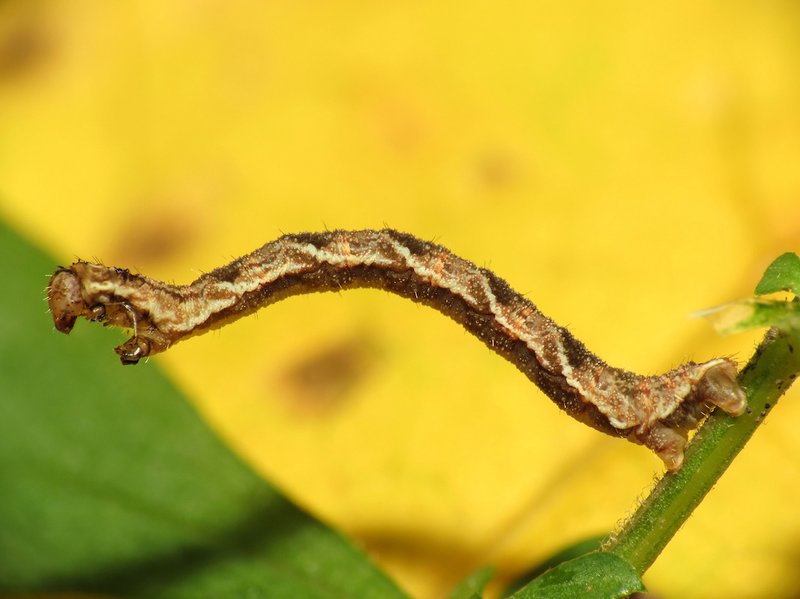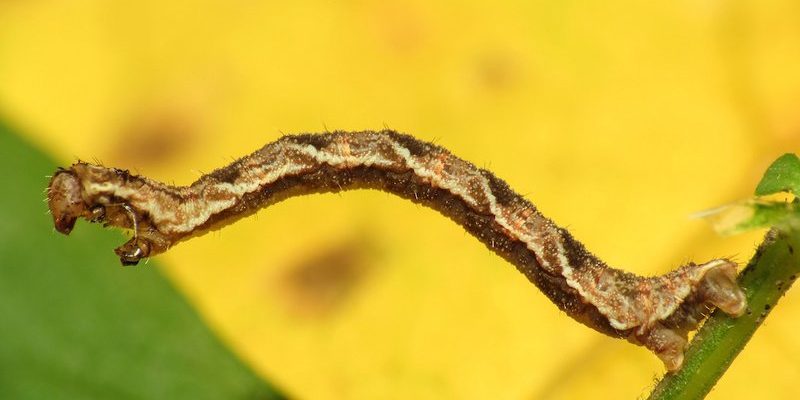
Honestly, inchworms are more than just cute little pests in the garden. They fall under the category of caterpillars, specifically from the Geometridae family. Their movement and anatomy are a blend of evolution and survival tactics. So, lets take a closer look at how these fascinating creatures work.
The Basic Structure of Inchworms
Inchworms have a rather simple body structure. They typically possess a long, slender body that can range from half an inch to a few inches in length. They have a head at one end, a thorax, and an abdomen that segments along its length. Each part plays a crucial role in how they interact with their environment.
Their body is soft and flexible, allowing them to twist and turn easily. This flexibility is essential for their survival, particularly since they rely on camouflage to avoid predators. You might find them nestled against the green of a leaf, perfectly blending in thanks to their coloration.
The coloration of inchworms can vary significantly based on their species and environment. Some are vibrant greens or browns, while others might be more muted. This coloration is not just for looks; it also helps them go unnoticed by birds and other predators. So, when you see one inching along, remember that their appearance is part of a clever strategy to stay safe.
Understanding Inchworm Legs
You might be surprised to learn that inchworms have fewer legs than you might expect! They possess three pairs of true legs located on their thorax. These are similar to the legs you’d see on other insects and are used for walking.
However, the magic of inchworm movement lies mainly in their lack of additional legs. Instead of having legs all along their body, they rely on prolegs located on the abdomen. These prolegs act like small, flexible appendages that help them grip onto surfaces as they move.
So, how do these legs work together? When an inchworm moves, it doesn’t just crawl like a typical caterpillar. Instead, it employs a unique looping movement. It extends its body forward using its true legs, then pulls the back of its body up, creating a loop. This motion can resemble a wave or a slinky, making it both charming and effective. You might see them swinging almost elegantly, which is pretty entertaining to observe!
Prolegs: The Secret to Their Motion
Now let’s dive deeper into the world of prolegs. These appendages are not technically legs; they’re more like grip pads that help inchworms anchor themselves. In total, inchworms usually have five pairs of prolegs, and each pair is equipped with tiny hooks that help them cling onto surfaces as they move.
Prolegs are crucial during their movement because they provide the inchworm with the stability it needs. Imagine trying to climb a steep hill without having a firm grip on the ground. That’s how inchworms would feel without their prolegs. They can dig into the bark of trees or hold onto leaves, allowing them to navigate their environment easily.
Interestingly, the number of prolegs can vary slightly among species, but they all serve a similar function. This adaptation allows inchworms to be agile climbers, giving them access to food sources and safe hiding places, which are essential for their survival.
The Unique Motion of Inchworms
Let’s talk about how inchworms put their anatomy to work in motion. Their distinctive looping movement is often likened to a little dancer gliding across the stage. To move forward, they stretch their front legs out, creating a loop while gripping with their prolegs.
Imagine a slinky toy in motion. It stretches and contracts smoothly, and that’s quite similar to the inchworm’s style of locomotion. This method not only helps them move effectively but also reduces the risk of being detected by predators, as they look less like a crawling creature and more like part of the flora.
This motion is particularly efficient when inchworms need to navigate the complex landscape of their habitats. They can easily maneuver around branches and leaves, making their way to tender foliage to munch on. So, the next time you see one inching along, take a moment to appreciate the clever way they’re designed to blend in and move.
Inchworm Movement in Nature
Inchworms play a unique role in their ecosystems. As caterpillars, they primarily feed on the leaves of various plants. Their method of movement allows them to access food high up in trees and bushes without exposing themselves too much to predators.
Not only do they feed on leaves, but they also aid in the natural process of leaf litter decomposition when they eventually transform into moths. So, in a way, inchworms contribute to the larger life cycle of their ecosystem. You might not think about their role while watching them crawl, but they’re important players in maintaining ecological balance.
Another fascinating aspect of inchworm movement is how it can vary based on environmental conditions. On a windy day, for instance, they may cling more tightly to branches, using their prolegs to stabilize themselves. Overall, their unique anatomical features and motion strategies help them adapt to a multitude of situations in nature.
Understanding inchworm anatomy, from their legs to their prolegs and distinctive motion, allows us to appreciate these creatures even more. They aren’t just crawling plants; they are fascinating animals with unique survival strategies crafted by nature.
Next time you see an inchworm, remember the little marvels of evolution at play. Their simple, yet effective structure and movement adaptations are a testament to the wonders of nature. Whether they’re inching along a leaf or hiding in plain sight, inchworms are a beautiful example of how every creature has its special role to play. So, grab your binoculars and take a closer look—you might just find a world of wonders waiting for you!

